ElectionremindersDay








Williston voters have six candidates to choose from, for three available seats, to represent them in the Vermont Senate as part of the Chittenden Southeast Senate District.
The roster of candidates includes three incumbent Democrats who won their party’s nominations during the primary election in August (Thomas Chittenden of South Burlington, Kesha Ram Hinsdale of Shelburne and Ginny Lyons of Williston) and one Republican challenger, Bruce Roy of Williston, who won a Republican primary nomination.
Two candidates who didn’t participate in the primaries are also on the General Election ballot: Republican Rohan St. Marthe of Jericho and Shelburne independent Taylor Craven.
The Chittenden Southeast Senate District covers nine Chittenden County municipalities and a portion of the City of Burlington.
Early voting has begun, as all registered voters received ballots earlier this month and can mail or hand deliver them to the Williston Town Clerk’s office. The mailed ballots can also be completed and turned in on Election Day, Nov. 5, at the Vermont National Guard Armory in Williston Village.
The Observer asked the candidates a series of questions to help inform voters’ decisions. Their responses begin on this page. (Ram Hinsdale did not participate. In an email response, she said she is taking time to welcome a second child to her family.)
Look for responses in next week’s Observer from candidates to represent Williston in the Vermont House of Representatives.

Please describe your professional background and your personal connection to the State of Vermont.
THOMAS CHITTENDEN: I have lived in Vermont for 44 of my 47 years. I grew up in South Burlington (SBHS ’95) and I went to the University of Vermont for my undergraduate degree and to earn my MBA.
My current full-time employer is the University of Vermont, where I am a Senior Lecturer in the Grossman School of Business.
My public service history includes eight years (three terms) on the South Burlington City Council, five years on the Green Mountain Transit Board, 10 years as a Rotarian and many other years on other local community committees.
My lovely wife is a 5th grade public school teacher in Colchester, and we are raising our three kids (12, 15 and 17) in the house I grew up in on Dorset Street.
If re-elected, this would be my
third term in the Vermont State Senate.
TAYLOR CRAVEN: I was the valedictorian of the first graduating class from Twin Valley High School in Wilmington, Vermont. I attended the College of Engineering and Mathematical Sciences at the University of Vermont on full scholarship, earning a B.S. in Civil Engineering.
Post graduation, I worked at multiple engineering consulting firms with roles including resident project representative for large municipal infrastructure projects, hydraulic and hydrological modeling for bridges destroyed by Hurricane Irene, residential site design, environmental and safety auditing for railroads, inspection and surveying.
I also served on the Colchester Planning Commission.
I founded Green Mountain Maintenance and Carpentry, Bright Future Properties and Craven & Emmons — all companies focused on renovating old homes to create new housing units. Following the death of my parents and older brother, I took over the

family business, Craven’s Home Services, LLC.
GINNY LYONS: I retired as a Professor of Biology during the pandemic with over 40 years of experience, including at Trinity College. I taught at Community College of Vermont and mentored University of Vermont students during Senate sessions.
I was president and national board member of the Vermont chapter of a science honor society at UVM. I developed and directed programs in medical technology, premed and pre-allied health and taught diverse areas from environmental to human development.
Some of my students were “first in family” to attend college and now work in farming, nursing, child care, as physicians, lab techs, mental health counselors, teachers, school administrators and solar energy developers.
My husband and I have lived in Williston for 50 years with strong ties to family and friends across Vermont. Our daughters and close relatives live and work in Ver-
see CANDIDATES page 2


The Williston-Richmond Rotary Club and Williston Federated Church will host the fourth annual Trunk or Treat event on Sunday, Oct. 27 from 2:30-4 p.m., rain or shine.
This year’s event will take place in the Village Community Park parking lot (250 Library Lane), next to Williston Central School — a new location for the event.
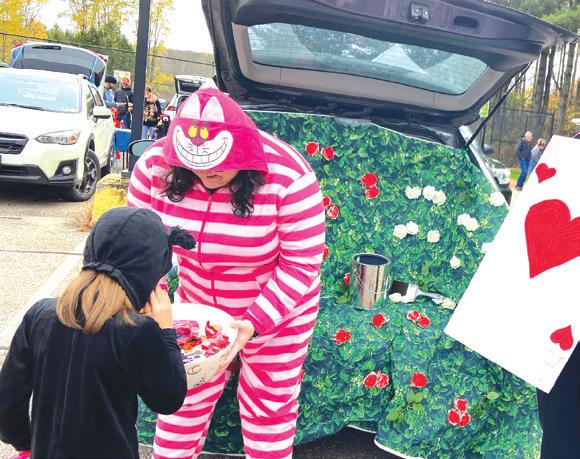
Also new this year: face-painting by Pipsqueak the Clown. The event is free and open to all ages.

continued from page 1
mont. I coached softball with other parents, coached tennis, led Cochran’s Ski Club and chaperoned school trips while enjoying the environment and beauty of Vermont with my family.
These and other activities helped build the strong sense of community I believe underlies our way of life. Service on school board, regional planning commission, as a justice of the peace and as selectboard chair extend my interest to help neighbors and represent Chittenden Southeast Senate District.
Vermont resident, graduating from Essex Junction High School and the University of Vermont. I had successful careers at IBM and the Vermont Air National Guard, retiring as a Colonel from the U.S. Air Force in 2008 and as an accomplished business leader from IBM in 2013.
Williston has been home since 2001.
I could have stayed retired, but the future of Vermont is too important to stay on the sidelines. The lack of balance, cooperation and compromise in the Vermont Legislature is alarming. It has led to unchecked spending and increasing tax burden, making living here unaffordable and inhospitable to businesses.
The supermajority does not
work with the governor or listen to Vermont citizens. Veto overrides happen regularly with disregard to his commonsense ideas.
I will focus on the responsible use of taxpayers’ dollars. I have Gov. Scott’s endorsement, and he urges voters to elect me to help him bring balance and commonsense to Montpelier.





ROHAN ST. MARTHE: I am originally from the Caribbean Island of Saint Lucia. I am a father of four children, and my wife is a native Vermonter. We met 13 years ago in Massachusetts and have been married for 12 years. My professional background is in media and video production, and in recent years, I have expanded my portfolio to include aviation and hospitality. I come from a family with deep roots in media and hospitality, dedicated to serving others and ensuring equal treatment for all.
My faith in Jesus Christ guides my life, and since moving to Vermont in 2017, I have continued to pursue this path while also seeking to fulfill God’s will for me and my family.
How should the state respond to the increasing trend of damaging floods? Would you prioritize investing in climate adaption and resiliency, or in replacing fossil fuels with renewable energy sources in an effort to slow humancaused climate change?
CHITTENDEN: Vermont has a moral and existential imperative to do what we can to reduce our greenhouse gas emissions. I am proud of many of our efforts and track record addressing this climate crisis. But, we need to do more.
Based on the recent information about the Affordable Heat Act, I do not support committing any more of our resources to stand up an incredibly complex and unprecedented “Clean Heat Credit Exchange.” We are just too small of a state to do that alone.
I do support using a market sensitized tax on our heating fuels (similar to our gasoline tax) and using these revenues to directly subsidize the electrification of our
heating systems and the weatherization of our homes, prioritizing the most vulnerable in the state.
We need to commit more attention to adapting our infrastructure to this inevitably changing climate to make us resilient for generations to come.
CRAVEN: Climate adaptation and resiliency are the more pragmatic approaches to the current flooding problems. Vermonters cannot reverse the current trajectory of the climate alone, and must invest in direct measures to mitigate damages suffered from flood events.
Increased on-site water retention is probably the most impactful tactic, along with building at higher base elevations, and out of the FEMA designated flood zones.
LYONS: Severe weather demands local hazard mitigation planning linked with regional, state and federal plans and investment.
We should continue investments in EMT training, which I added to this year’s budget, and educate citizens about emergency response, safe places, public health and coordination. We should ensure 911 and statewide communications are accessible

and continue buyout and relocation efforts, climate responsive building codes, flood risk maps, fortified electric grids and green infrastructure.
Vermont must move toward our greenhouse gas reduction goals through weatherization, heat pumps, electric vehicle infrastructure and solar panels on roofs and over parking lots.
A diversity of energy sources is important and any transition should be cost effective. A current fee on heating oil pays for cleanup of private and business oil/gas spills.
As suggested by the Public Utilities Commission, could a similar fee be used to help people move away from fossil fuels, especially if the Clean Heat Standard proves too costly for low- and middle-income Vermonters?
ROY: The Global Warming Solutions Act that allows lawsuits against Vermont (happening now) for failure to meet carbon emissions mandates was not a good response.
The Affordable Heat Act/Carbon Tax that is estimated to cost Vermonters over $10 billion and upwards of $3 more a gallon on heating fuel with resulting minuscule CO2 emissions improvements was not a good response.
The new Renewable Energy Standard that will raise electric rates 8-10 percent when Vermont
electricity is almost 100 percent renewable was not a good response.
These laws passed by veto override of Gov. Scott do nothing to help immediate flooding threats, but rather, tax financially struggling Vermonters even further.
Better, more reasonable responses to damaging floods are completing the Vermont Emergency Management 2018 mitigation actions, investing in floodplain management, flood-proofing at risk homes and businesses, possible buyouts/relocations, mitigating erosion hazards, culvert management and waterway dredging where it makes sense.
ST. MARTHE: We need to be honest about what’s happening around us. I do not prioritize climate change because I believe we cannot fix what God has created. Floods have existed for centuries — do we think they didn’t exist 2,000 years ago?
I believe we should focus on transitioning to renewable energy, but without abandoning fossil fuels. People should have the choice. While I have no issue with electric cars, I prefer affordable gasoline that lasts.
Regarding climate change, global surface temperatures have increased overall, but there were five years in the 2000s when they actually decreased, and the media
remained silent. The trend of rising temperatures is clear, but not as rapid as we’re being led to believe.
Are human activities solely responsible for this? There are many manmade factors influencing climate, and while science may offer explanations, they too can contribute to the changes we see today. For instance, why is carbon dioxide at an all-time low compared to past ice ages?
As for fossil fuels, I do not support mandates to eliminate them entirely. The increase in flooding is largely due to how and where we permit building and whether proper drainage systems are in place. Building permits play a crucial role. If someone buys land, is it suitable for building multiple homes, or would that disrupt natural drainage?
We can’t continue to build houses without considering these impacts.
Are there any strategies or solutions to housing affordability and availability that have not been tried that you think are promising?
CHITTENDEN: To achieve our land use and climate mitigation goals, Vermont needs to build up
— and not just “out.” Taller buildings in our town centers create more affordable, energy efficient and walkable options for people to live where they work, or to downsize to an easier homestead (that they don’t need to mow, shovel or shingle) with the walkable benefits of high-density complexes near modern conveniences.
Included in revising our building codes to allow and incent taller residential structures, we need to further relax or eliminate parking mandates on these properties in desired and identified areas to make the economics work for our much-needed Vermont developer pioneers and leaders to invest in these housing projects.
Additionally, we need to revisit the property tax credit currently employed in our education financing formula to align with our desired land use goals and to ease the collective property tax burden.
CRAVEN: Housing is the primary issue facing Vermonters. We simply need more of it.
The solution is codifying Permanent Primary Residential Housing (PPRH) — permanent in the sense that the units constructed are permanently deed-restricted to serve as someone’s primary residence, where they receive mail or deliveries, and the place they associate with, for the purpose of
see CANDIDATES page 4



















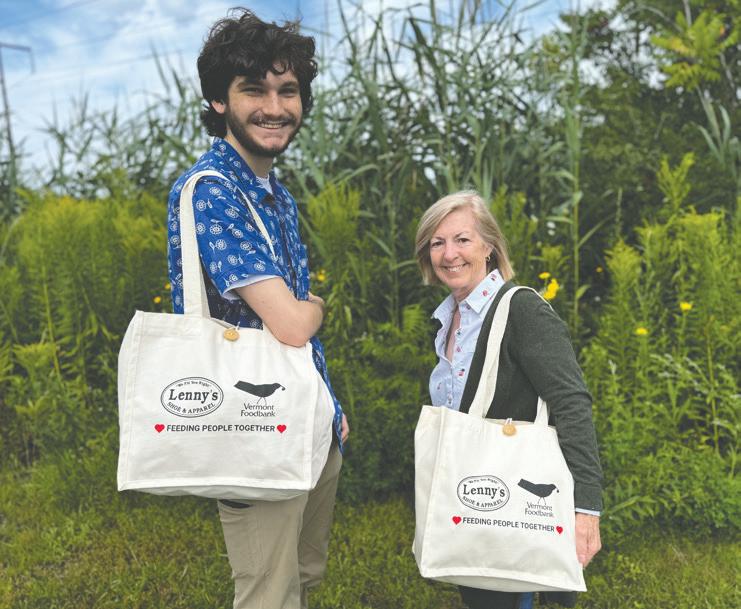


tax residency.
These could be multi-family residential units, single-family homes or any other type of unit that serves as primary residential housing — not short-term rentals or second homes.
Developers of PPRH shall be incentivized with tax breaks, streamlined inspections, waived permit fees and other incentives to encourage this type of development.
LYONS: Conversion of unused office space, old schools or empty buildings for housing could accelerate the development of temporary or permanent housing. Some have been tried. We could do more.
Local and state support for a mixed-use “Wisdom House” development in Jericho can help with long-term care needs. This can be copied in rural parts of the state.
housing development. We should ensure that permanent housing goes to Vermont workers, not for second homes. When determining access to publicly funded temporary or permanent housing, establish a priority list. This might place families or disabled populations higher. The administration should do this with people leaving the hotel program.
ROY: Vermont has been underbuilding houses and rental properties for a generation. Restrictive, expensive, confusing and inconsistent regulations have been part of the problem. Expensive building costs, and a shortage of workers in all the construction trades, compound the problem.
We must address this problem on multiple fronts:
• Serious Act 250 reform with a predictable, simpler and reasonable approach to protecting our environment that developers can work with and will encourage them to build more affordable housing.
buying a home more affordable and lower the ownership cost to landlords.
• Lower the income tax burden. By making it more affordable to live in Vermont, we can keep new and experienced tradespeople in Vermont. This not only provides a bigger pool of talent but keeps our tax base solid.
• Provide an incentive for not only building in growth centers, but outlying areas as well.
ST. MARTHE: We have thousands of acres of unused land with restrictive regulations. It’s time to ease these land-use restrictions to relieve pressure on the housing market.
The cost of homes is too high, and many college graduates fear they will never own a home. Now is the time to start building outside of densely populated centers.

state must do more to assist banks willing to follow federal guidelines and make home ownership more accessible.
The median household income in Vermont has risen 7.8 percent since 2019 — the highest growth of any state in the country, according to Public Assets Institute. Do you think wage and income growth are keeping pace with inflation and tax increases?
and the entire country. I continue to advocate for tax policies at the national level to ensure we all pay our fair share. Equitable tax policy directing resources to the common good of public education, public transportation, public safety and public health must be our north star — for the whole country and not just Vermont.
CRAVEN: Despite progress in the median household income, inflation and tax increases seem to be outpacing any of those gains for most hard-working Vermonters.
Matching Vermont Housing Community Board (public) funds with private funds can accelerate

c
• Lower the property tax burden on property owners. Get property taxes under control to make
I also support housing assistance for all people, regardless of race or ethnicity. I appreciate programs like Federal Housing Administration home loans, but many banks impose additional terms, making home ownership more difficult for families. The





CHITTENDEN: Growing income inequality nationwide is tearing at the American dream, concentrating more wealth among fewer citizens. We need national tax policy that builds our public infrastructure and services to lift everybody in our country up while providing equal access to educational opportunity, rewarding careers and a shorter work week.
One trip to the local grocery or building supply store demonstrates the staggering increases across the most common products.
LYONS: For each economic sector — housing, fuel, food, health — inflation varies.
continued from page 3 see CANDIDATES page 5
But Vermont cannot do this independently of our neighbors
According to the Kaiser Family Foundation, national inflation for both health care and goods and services rose over 30 percent between 2019-2024. Vermont’s median household income increase of 7.8 percent during the same period appears insufficient to cover these



increases.
People on fixed incomes are especially vulnerable. Social Security increases have not kept pace with inflation, nor has federal health care investment.
Wages necessary to live in regions of Vermont vary. Chittenden County requires a higher median income to rent and pay for food or schools. State and local governments are not immune from increasing fees for services that Vermonters expect. The cost of social services, public safety, transportation, natural resources and schools are affected by inflationary pressures.
Much needed revenue comes from consumer taxes, including tourism dollars. Education costs had a striking effect with high increases in property taxes. The Commission on the Future of Vermont Education must consider how to balance these relationships.
ROY: Back to back record $8.6 billion state budgets.
Double digit property tax increases.
Double digit insurance premium increases.
A 20 percent increase in Department of Motor Vehicle fees.
A $100 million payroll tax.
Continued taxing of Social Security and Veterans’ pensions.
A $10 billion carbon tax on heating fuels.
A $2-3-per-gallon potential increase in heating oil and gas.
A two-times increase in property transfer fees.
An increase in professional licensing fees.
A 8-10 percent increase in electricity rates
The third highest tax burden in the U.S. (only New York and Hawaii are higher).
The 49th worst economic outlook in the U.S.
The spend-and-tax, veto-overriding actions of the Vermont legislative supermajority and my opponents have taken us in the exact opposite direction of growth. To start, we must return local control of our property taxes and tie the homestead rates directly to our vote on school district budgets.
No, wages and income growth are not keeping up with inflation, tax increases and general affordability.
ST. MARTHE: Wages and income are not keeping up with inflation.
We need to be honest — what caused this inflation? It’s a direct result of policies pushed by our government at both the federal and local levels.
Property taxes are outrageous compared to seven years ago. The government is to blame.
Gov. Scott has made efforts to address taxes, but more needs to be done. We need a robust tax overhaul and reform.
Vermonters are struggling, and we must resist wasteful spending at all levels of government.
Who is benefiting from this? Certainly not Vermonters. The question is, who are the people in Montpelier working for — the citizens or the lobbyists?
What other issues would be your focus in the Legislature?
CHITTENDEN: Towing and Trash. Vermont lacks adequate consumer protections for towing practices. Simple things like requirements that towing companies maintain certain hours of operation for impounded cars to be retrieved, so that owners of impounded vehicles have access to personal items in their cars, that towing
from page 4 see CANDIDATES page 13
It all starts with CHILD
PUBLIC INVESTMENT IN CHILD CARE HELPS PREPARE OUR LITTLEST VERMONTERS TO DO BIG THINGS – STARTING ON THEIR FIRST DAY OF KINDERGARTEN.

Saturday, Oct. 19, 11am-4 pm
University Mall, South Burlington

www.VermontJobs.com/JobFair
Exhibit space available, call 802-872-9000 or email Support@VermontJobs.com JOB

Shelter, one of three planned statewide, will be open Nov. 1
BY CARLY BERLIN VTDigger
State officials are working to assemble three emergency family shelters following the evictions of over 1,000 people from Vermont’s motel voucher program this fall.
Two sites — the former Vermont State Police barracks in Willison, and the Waterbury Armory — will be ready to serve as family shelters by Nov. 1, Joshua Marshall, communications and operations manager for the Department for Children and Families, confirmed in an email Wednesday morning.
A third location in Montpelier is also in the works, though “some renovations are required,” Marshall said. “We are working to bring this up as a family shelter over the next few months,” he added.
The move comes as Gov. Phil Scott’s administration has faced mounting pressure from municipal leaders, lawmakers and ser-
vice providers over the last month to intervene in the current wave of evictions from Vermont’s emergency housing program. The step toward creating the new shelters for families is the first public action administration officials have taken in response.
As of Oct. 15, 724 households — amounting to 1,175 people — have exhausted their motel vouchers, hitting a new 80-day-limit on motel stays, Marshall wrote in an email Tuesday.
Nearly 300 children have left the program since the new limits kicked in last month, Marshall said. DCF anticipates around 100 additional households will exhaust their nights by the end of October.
Facing a severe housing shortage and a lack of family shelters, some families evicted from the motel program have had no option but to pitch tents outdoors — a situation that has become increasingly dire as temperatures drop.
The new shelters, first reported on by NBC5, appear to be specifically set aside for families with children, though many other vulnerable Vermonters have been
Williston’s Community Newspaper Since 1985
www.willistonobserver.com P.O. Box 1401, Williston, VT 05495 | 802-489-5499
ADVERTISING
Rick Cote, Associate Publisher rick@willistonobserver.com 802-373-2136
EDITOR
Jason Starr editor@willistonobserver.com
PRODUCTION & DESIGN
Jan Kenney jan@willistonobserver.com
PUBLISHER
Susan T. Cote susan@willistonobserver.com
BILLING INQUIRIES
Michael McCaffrey office@willistonobserver.com
Member:
ADVERTISING SPACE DEADLINE
Friday at 5 p.m. for the next Thursday issue rick@willistonobserver.com, 802-373-2136
CLASSIFIED ADS
Deadline is Friday 5 p.m. There is a fee for business, real estate, help wanted and legal ads. Free classifieds must be 25 words or fewer and are printed on a space available basis.
SUBMISSIONS & LETTERS
Deadline is Monday noon for Thursday issue. News/ story tips are welcomed. Letters to the Editor should be 300 words or fewer and include your name, address and a daytime phone number so that we can verify the letter’s author.
The Williston Observer reserves the right to edit or refuse submissions or advertising. Opinions expressed in the paper are those of the writer and do not necessarily reflect the opinion of the paper.
publication of Twin Ponds Publishing LLC

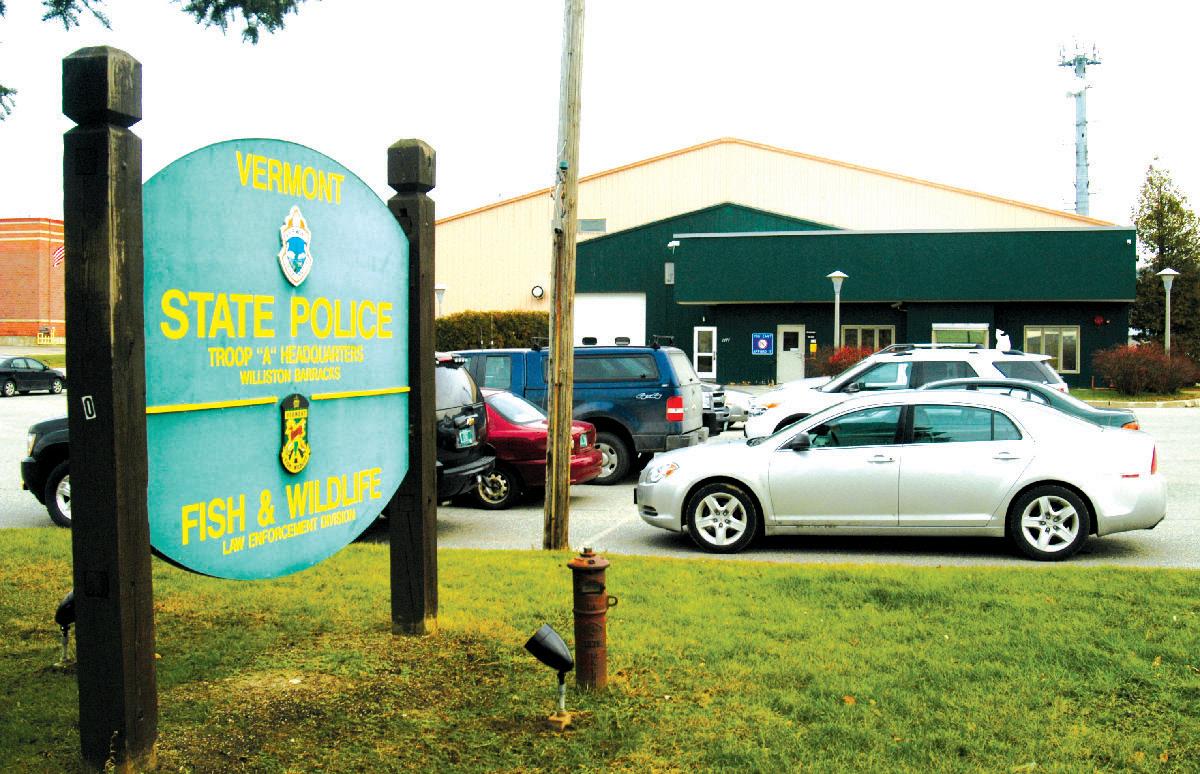
port,” Marshall said. “We look forward to our continued partnership with local providers to help enable prompt facility readiness to keep children and families safe.”
At a Statehouse press conference Tuesday — before news of the new state shelters had arrived — service providers from across Vermont cautioned officials against setting up large, congregate shelters like the ones the state stood up last spring.
“This warehouse solution is an even less effective band-aid solution than continuing to provide motel emergency housing,” said Libby Bennett, executive director of the Groundworks Collaborative in Brattleboro.
evicted from the program since mid-September, including people fleeing domestic violence, elderly people and people with severe disabilities.
Many details about the three new shelters remained uncertain as of Wednesday morning — including, critically, who will run them.
“These facilities will need to have a provider enlisted to sup -
This story, by Report for America corps member Carly Berlin, was produced through a partnership between VTDigger and Vermont Public.

Please join me in supporting Sen. Ginny Lyons for re-election to the Vermont State Senate. I have known Ginny for over 25 years, first as the Chair of the Williston Selectboard, where she was a voice for the community during significant development and change, and next as our State Senator for many years and as a colleague when I served as State Representative for Williston.
Ginny is a former Chair of the Senate Natural Resources and Energy Committee, where she has guided Vermont’s response to climate change, renewable energy development, stormwater protection and land use protection. She also serves on the joint carbon reductions committee. She has a commitment to people with a focus on policies to reduce trauma and toxins that negatively affect children and human development.
Currently Ginny is Chair of the Senate Health and Welfare Committee and is a member of the powerful Senate Appropriations Committee. She also chairs the Health Reform Oversight Committee. In these roles, she links medical care with commu-
nity services to improve quality and address affordable costs.
Let’s return Ginny to the Senate, where she can continue to work on these, and other, critical issues.
Terry Macaig Williston
There are sharp distinctions between progressive Democrat Lt. Gov. David Zuckerman and his challenger, a former longtime legislator, Republican John Rodgers.
Rodgers left the Democratic Party this year and joined the Republican Party because of runaway tax and spending passed by the progressive Democratic supermajority of legislators, and their disregard for those of us who think differently than them.
Recent supermajority taxand-spend laws include a $100 million payroll tax, a property tax increase of 14 percent, increases on a wide assortment of taxes and fees, and pending huge taxes on Vermonters who heat with oil or propane, up to $4 per gallon.
Sharp tax increases are likely not far behind for gasoline as part of the supermajority’s march
toward phasing out gas, oil and propane.
Republican Gov. Phil Scott issued a series of vetoes against these taxes and fees, but the progressive Democrats defeated all the vetoes. John wholeheartedly supports the Scott vetoes, and the governor’s ongoing crusade against more and more taxation.
Scott has endorsed Rodgers for Lieutenant Governor.
While Vermont’s traditional rural land uses, such as farming, timber harvesting, hunting, fishing and trapping are under attack by well-funded extremist organizations, we don’t know for certain where many legislators stand.
John not only supports Vermont’s traditional rural way of life, he lives it. He farms the Rodgers Family 200-year-old farm in the Northeast Kingdom. He harvests timber off the Rodgers land and trucks it to local timber mills.
He hunts, fishes, snowmobiles and owns an ATV. John’s perspective is under-represented among today’s elected state officials. If you want a Lieutenant Governor who understands and values this traditional way of life, vote Rodgers.
Steve McLeod Bolton


Recently, I created a custom wildlife crossing sign that I placed on my family’s busy driveway.
The idea came to me because I often see animals in my neighborhood, and I’ve noticed how many of them are in danger of being hit by cars. I hope that by putting up this sign, drivers will slow down and be more mindful of animals crossing the road.
I believe raising awareness about this issue could help reduce the number of animals harmed on the roads in our area. It’s important to me because I care about our environment and the wildlife that lives here.
I’d love to inspire others in Williston to think about ways they can help protect animals too — whether that’s through something as simple as driving a bit slower or even putting up their own signs. Isabel Crandall, age 10 Williston
The Williston Observer welcomes election-related Guest Columns and Letters to the Editor submissions leading up to local, state and national elections. We refrain from publishing election-related material in the issue immediately preceding an election



Thuja custombuilds clothing for Vermont’s
BY JASON STARR Observer staff
When you’re leaving the house and the air is cool, maybe there is wind and some rain, do you ever notice how exposed your neck is?
Henry Sengle is building a clothing brand in Williston that

solves that naked neck feeling.
The Hinesburg native and CVU graduate set out in 2019 to create “the perfect mid-layer for the gauntlet of weather that Vermont brings,” he said. At the time, he was working at Outdoor Gear Exchange in Burlington and was well-versed in the multitude of fleece and hoodie options for outdoor enthusiasts. He also possessed sewing skills and a passion for hand-made goods.














“After months of trial and error, I dialed in a very specific design,” he said.
That design incorporates what’s known as a cowl neck into a pullover that functions as an under-jacket layer and an everyday, indoor-outdoor hoodie. The raised neckline creates a built-in neckwarmer that can be cinched tight or worn loose like a scarf under the chin.
“That definitely sets it apart,” Sengle said. “That little bit of insulation around your neck, you get used to it very easily because it’s so warm.”
The company, Thuja, is named after the genus of the Eastern white cedar tree. Sengle started it as a home-based side project, stitching custom orders for fellow Outdoor Gear Exchange employees, their friends and others he knew in the outdoor sports industry.
“I didn’t even have a website,” he recalls of those early days in

Thuja partners Kimberly Piscadlo, Henry Sengle and Jake Sienkiewycz, above, at their manufacturing facility in Williston on Tuesday.
Left, Thuja founder Sengle hands over a clothing order to Sarah Fisher of Aerie, a tech consulting company in Winooski.
OBSERVER PHOTOS BY JASON STARR
2019. “People were just messaging me or texting me and I’d say, ‘here are the colors I have, build your own and Venmo me.’
“The word of mouth was pretty insane … It was growing out of control.”
Feeling overwhelmed, he reached out to fellow CVU gradu-
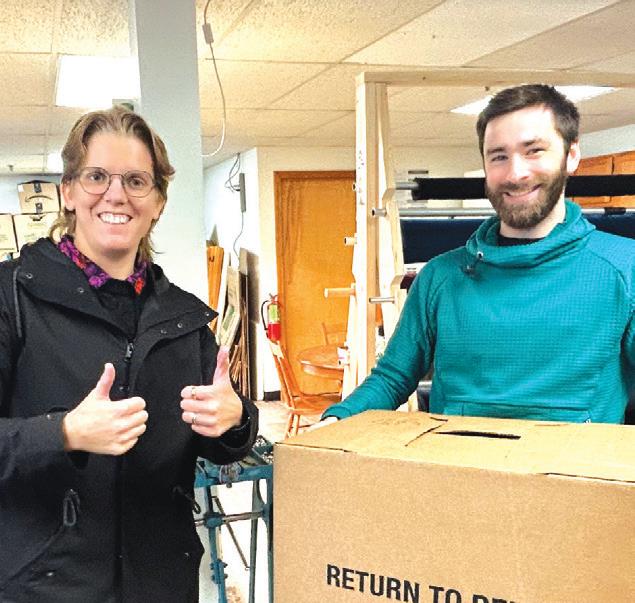
ate Jake Sienkiewycz and Kimberly Piscadlo, a friend from Pennsylvania, to help. By 2021, the trio had partnered in the venture, and in 2022 they moved into a manufacturing space on Leroy Road in Williston, across the street from Gordon’s Windows Decor.






Gordon’s President Kelly Clements has mentored Sengle through the growth of the business, and has become a customer, ordering custom pullovers for her staff.
Such bulk orders from Vermont companies to outfit their employees have been a major part of Thuja’s business. From ski patrols at Jay Peak, Sugarbush, Mad River Glen and Stowe to breweries and national companies with Vermont offices, Thuja has settled into a business-to-business niche — while also continuing to fulfill direct-to-consumer orders. You can also find
Thuja clothing in retailers like Onion River Outdoors in Montpelier, The Mountain Goat in Manchester and REI in Williston.
The Vermont-made element is signified by a silhouette of the state on each piece.
“That’s just really appealing to people,” Sengle said. “Wearing something made locally by like-minded outdoorsy people, sustainably and customized just feels better than a fleece that was mass produced in Bangladesh and sold all over the country.”
Sengle expects to soon outgrow Thuja’s cozy unit on Leroy Drive.
“It’s really maxed out right now,” he said. “It’s exciting to figure out what the next step of growth will look like and how to navigate that.” Thuja continued from page 8
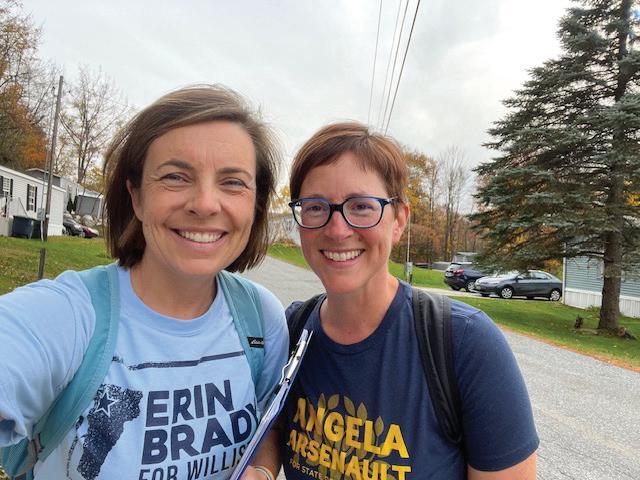
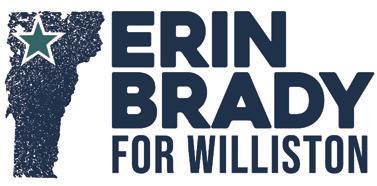
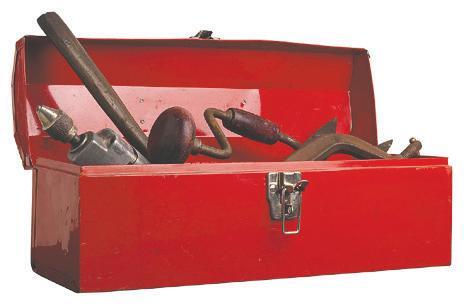

BY DEBORAH J. BENOIT Special to the Observer
We’ve probably all run out to the garden on a fall evening as the temperature drops and a frost warning is issued. We throw a sheet over our fruit-covered tomato plants to eek just a little more growing time from the rapidly evaporating season.
Ghostly visions of sheet-covered tomato plants aside, there are other ways to prolong the harvest.
Knowing the average first frost date in fall for your location can help you decide when to put your garden to bed or make preparations to extend the growing season. You can find the average first frost date for your location online at www. garden.org/apps/frost-dates.
Once you’ve determined your average first frost date, look around your garden. What plants are still
productive?
Those growing in pots can be moved inside a greenhouse or into an enclosed porch for protection from the cold. For in-ground plants, there are several alternatives to ex-
Invert a cardboard box over smaller plants … This creates a protective structure around the plant that is easily removed in the morning.
tend the growing season. There is, of course, the tried-and-true covering of plants like tomatoes with old sheets or blankets when frost is forecast. Be sure to cover com-
pletely to prevent damage to foliage and fruit. Remove the covering in the morning to allow access to the sun’s warmth and light.
A convenient alternative, if you have one handy, is to invert a cardboard box over smaller plants, completely covering them, with the open end of the box resting on the ground. This creates a protective structure around the plant that is easily removed in the morning.
Tomato cages can be encircled with clear plastic. Drive stakes into the ground just outside the plant’s perimeter and wrap plastic around the stakes and over the top, enclosing the plant without touching the foliage. Allow a place that can be opened during the day to vent excess heat.
If you’d rather not build a tomato cover, there are pop-up plastic plant covers available for purchase online or at garden supply stores.


To protect multiple low-growing plants, try floating row covers.
Place a



plants to protect against the cold. Hold edges in place with garden staples or weights. Remove the cover during warm days.
Garden fabric is made of spun-bonded polyester. It allows light and water to penetrate and comes in various weights. Choose a heavier weight to insulate against the cold. As temperatures drop further, plastic sheeting can be added on top of the garden fabric, adding additional insulation.
For taller plants, consider using low tunnels. They function like floating row covers, but with a series of inverted u-shaped supports raising the fabric above the plants. At the end of the row, the fabric drapes to the ground, closing the tunnel. To prevent over-heating on warm days, the ends can be opened, and then closed again as the temperature drops.
If you’re growing cold-hardy varieties of salad greens (kale, Swiss chard, spinach) or root crops (carrots, beets) in a raised bed, you can add a cold frame to extend the harvest season further into the fall.
A cold frame is a box with a transparent cover, hinged so that it can be opened as needed to vent excess heat. At night, the closed cover protects plants. For best results, it should be in a south-facing location in direct sunlight.
Even cold-hardy varieties won’t continue to grow once temperatures drop. They’ll eventually go dormant, but you can still harvest leaves and roots for a time.
These techniques can be used again in the spring to jump start your gardening year.
Deborah J. Benoit is a UVM Extension Master Gardener from North Adams, Mass., who is part of the Bennington County Chapter.

As much as you love your pets and work hard to make them part of the family, they’re also a big responsibility. Part of that responsibility includes setting up your home so it’s equal parts stylish (for you) and functional (for Fido).
Show furry friends a little love by making your home more pet friendly.
It’s common for pet owners to desire a space to keep all their furry friends’ belongings and avoid clutter. Ensure convenience and cleanliness by establishing an area near the door where you can store leashes, collars, toys and more.
Consider keeping a towel or two nearby for wiping paws (and snouts) after going outside. You can also keep your pets’ beds, food and water bowls in this space so it


Keeping pets in mind when decorating your home can help avoid future issues.
feels like their own little “home” when returning from a walk or going to sleep at night.
CONSIDER STAINRESISTANT FABRICS
From furniture to decor, avoiding fabrics that attract pet hair is a no-brainer for pet owners looking to escape a constant mess. Silk and
velvet are virtual magnets for fur, while alternatives like leather offer more practical choices that are easy to clean and durable.
Displaying grandma’s fine China and your favorite sports memorabilia may not go hand-in-hand with pet ownership. Instead, prioritize decor that’s washable and sturdy so you can avoid coming home to a delicate family heirloom shattered on the floor.
If you plan on your pets being outside on their own, it’s a good idea to carefully inspect your outdoor spaces before letting them roam. Look for gaps in the fence, identify potentially harmful plants and ensure outdoor structures like grills and furniture are secure.
-Family Features


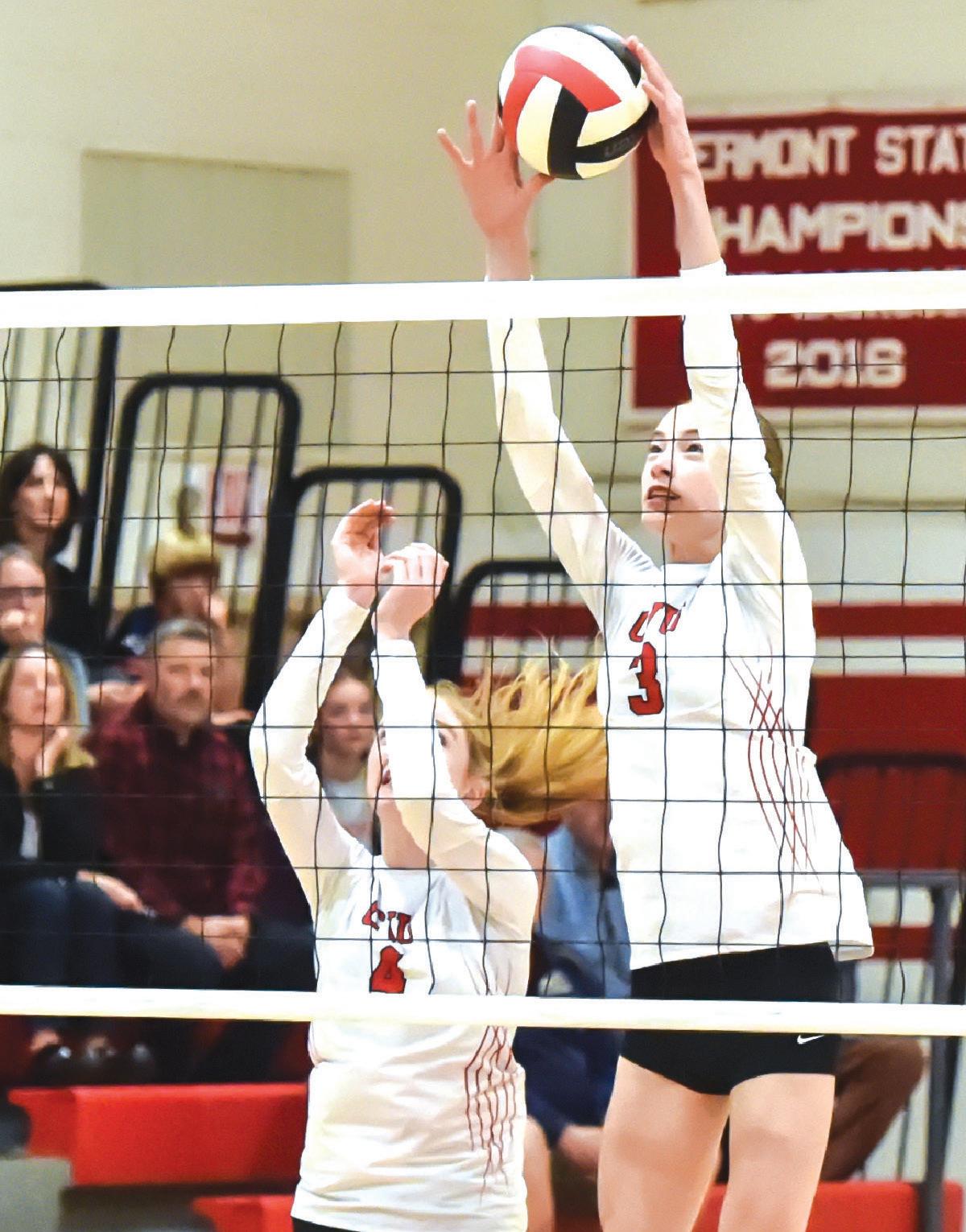





operators’ contact information is posted in areas regulated with towing — we need to do more to make this safe and equitable.
As for trash, we are burning a lot of fossil fuels shipping all of our trash out to Coventry. There has to be a better plan for us to manage refuse that would be less expensive with less emissions and less road wear.
We also need to look to incent consolidated service models that would lower consumer prices of curbside trash collection while also improving collection methods with less road usage and roadway management conflicts.
CRAVEN: Development and small business regulations are the most important issues, personally. I have first-hand experience trying to navigate the maze of permitting and business requirements.
People should be incentivized to add to the community by starting a business or creating housing and other developments that lead
to economic growth. Vermont has a very narrow economy, and overly restrictive zoning regulations don’t help that situation.
One look at a zoning map and local zoning regulations makes it abundantly clear that if you don’t already have it, or own it, you probably will have a hard time attaining it. We don’t need to open the zoning flood gates, but we do need to provide more space for multi-unit housing and business.
LYONS: Health care will continue to be a priority, including prevention, workforce development, primary care, children’s mental health, substance use disorder, the opioid epidemic, recovery programs, long-term care, and hospital sustainability.
It is important that we work toward cost-effective, accessible, quality care. Prevention maintains population health, reducing high-cost care.
Removing toxins from consumer products, reducing youth risky behaviors, support early in life through parent child centers, mental health support services and child care are ways we reduce health costs later in life. Schools,
• 75% off project costs, up to $9,500
• Free services for income-eligible Vermonters
• 0% financing options

families, primary care and social service folks are important in these efforts.
Also important are a balanced budget that supports people, climate, water, the environment, housing, taxes and affordability. Education and public safety will also each be important in the next legislative session.
As a member of the Appropriations Committee, I look forward to working on these and other issues.
ROY: Affordability is focus No. 1.
After economic affordability issues, public safety is the next most mentioned Vermonter concern. We must support our law enforcement officers, providing them the resources and training necessary to protect and serve our communities. That includes investments in clearing the backlog in our judicial system, more social workers to support non-violent crime response and interactions involving mental illness, and restorative justice professionals to facilitate that process when it fits.
The catch-and-release policy for those arrested must be seri-
ously reviewed. This policy, in conjunction with trial backlogs, is not holding perpetrators accountable for their criminal actions.
Vermont’s health care system is broken. Insurance premium hikes, primary care shortages, long waits for appointments and procedures, and hospitals running at a loss indicate a wounded system.
Leadership failure in this area has led Vermont to a point where transformation is necessary. The Wyman Report demands attention and action by our Legislature. Vermonters deserve better.
ST. MARTHE: On the issue of immigration, we must prioritize the needs of U.S. citizens and permanent residents. The Legislature should be transparent about how much money is being allocated to illegal migrants. We need a government that puts its citizens first.
I believe in fast-tracking asylum cases for those waiting for years who have legitimate claims and no criminal records. The African community is particularly affected, and we can do better by streamlining the process.
Is there anything else you would like voters to know about your candidacy?
CHITTENDEN: It has been an honor to serve in the Vermont State Senate, and I thank every single voter who entrusted me with this responsibility in the last two elections. I know we need to do better in Vermont to make our state more affordable and more livable — and I know the tax burden we are feeling is higher than many can afford.
If re-elected, please know I am hearing loud and clear from constituents that our property taxes are forcing really difficult conversations at our kitchen tables. And the Legislature needs to adjust accordingly to rein in the burden we are feeling. I hope I am getting better at this and not worse and I hope to hear from you. The best part of this role is hearing from constituents about what you want your legislators focused on. Please reach out at Thomas.Chittenden@ gmail.com or (802) 233-1913.
see CANDIDATES page 14

CRAVEN: Fiscal responsibility is of the utmost importance. Legislators have the duty to govern in a fiscally responsible manner. A 13.8 percent property tax increase over the span of one year is not acceptable.
All across Vermont, citizens are feeling the burden of this increase, whether you’re a renter or a property owner. Any future budget
will have to recognize the limited tax base that shoulders these financial burdens.
LYONS: Between 2022-2025 the Senate will see a 30 percent turnover of members. In the coming session, the Senate will lose at least six experienced Senators, five of whom are committee chairs.
It is important that I return to the Senate and provide strong, experienced leadership.
I look forward to supporting the Inclusive Equal Rights consti-

tutional amendment I introduced and that passed Senate and House with tri-partisan support last session.
My continued work with the Supreme Court and public safety on mental health issues in the Judiciary will be an honor.
I have a commitment to people — business owners, workers, teachers, EMTs, firefighters, public safety professionals, care-givers, kids, families and those in local government. My local and regional experiences help me understand


diverse interests for each town in the Chittenden Southeast Senate District.
I look forward to again representing you in the Senate.
ROY: Montpelier has ignored our concerns and issues for way too long. I bring new ideas from my 30-year business, engineering and financial background bolstered by strong organizational and analytical skills.
I know how to pull teams together, listen to the options, get to


the facts and then solve complex problems. I am committed to not only making sure you can live in Vermont but, better still, thrive in our brave little state.
Our affordability crisis and future transcends political party. I am not only proudly endorsed by both Governors Phil Scott and Jim Douglas, I’ve been endorsed by Dr. Louis Meyers, a previous Democratic candidate for the Vermont Senate.
It’s not about Rs, or Ds, or Ps, or Is: the two letters that count are VT! Vermonters, we are all in this together and we can fix it together.
Find out more at www. ROY4VT.org.
ST. MARTHE: We need to grow Vermont’s economy. I propose eliminating taxes for U.S. citizens and permanent residents aged 70 and older. In the future, I hope Vermont becomes a tax-free state.
We should also bolster tourism by creating attractions that benefit local communities, like a “Visit Vermont” initiative. Additionally, I support a 50 percent increase in law enforcement in Chittenden County’s southeastern region. I have three children in the school system, and I am deeply concerned about the content they may be exposed to, particularly related to sexual material. I believe parents should be involved in what their children are taught, and sexual content does not belong in schools.
While I understand the importance of teaching autonomy and health, it seems that some schools are pushing an agenda that sexualizes children. If elected, I will work to protect children from such materials. I also support expanding homeschooling options, ensuring parents have viable alternatives for educating their children.
I’m not a politician — I’m someone who fell in love with Vermont and is committed to fighting for its people. What we are witnessing today is an extreme agenda that does not represent Vermont for all Vermonters.
I want a Vermont where children can simply be children without having their minds influenced by harmful ideologies. I believe in God first, family second and country third. As an American citizen, I take my oath to uphold the Constitution of the United States and Vermont seriously. We need to make Vermont affordable again, and only by working together can we create these opportunities.
BY SARAH MASON Williston Town Clerk
Election Day is quickly approaching with just over two weeks before Nov. 5. My goal for all elections is to provide a safe, secure and efficient experience for all voters. Let’s all work together so the process goes efficiently and smoothly for all involved.
The Secretary of State’s office has recommended voted ballots be in the mail now to have them received in time for Nov. 5. In addition, Williston’s 24/7 accessible drive-up drop-box is located behind Town Hall for safe and reliable ballot return at any time until 6:30 p.m. on Election Day.
If you plan to vote in person at the National Guard Armory at 7846 Williston Road on Tuesday, Nov. 5, from 7 a.m.-7 p.m., please be prepared for traffic, parking and lines. And BYOB
(Bring Your Own Ballot!).
In all seriousness, the ballot supply at the polls is not endless, and the amount delivered is based upon most people bringing the ballot they were mailed with them.
For anyone who experienced the situation at Williston Central School a few weeks ago, you know what it is like when many people try to approach the Village Center at the same time. Schools will be in session on Nov. 5, so morning and afternoon drop-off will be its usual bustling self, and regular Route 2 village traffic starts to back up around 4:30 p.m. on a normal day.
This Nov. 5, voter turnout is likely to be like nothing we have seen before. Any concerns I have are centered around the logistics of voting in person. The infrastructure of the village, the armory, and the parking lot are




not suited to serve 8,000 people. Voting early is the best way to avoid traffic, parking and standing in line.
In addition, Covid is still alive and spreading in our community. Kids are sick, adults are sick, and this will continue over the coming weeks. I would ask you to keep this in mind when making your plan on how to cast your vote in the coming weeks. All ballots are counted regardless of voting method, if they are received by 7 p.m. on Nov. 5. Regardless of voting method, be sure to use a black pen, fill in the ovals, do not overvote, turn the ballot over to the second side, and SIGN the Voted Ballot Envelope when you’ve put your ballot inside. If you are coming to the polls to put your ballot in the tabulator yourself, you do not need to use the envelopes, as you are a day-of voter, not an absentee voter.





















Nov. 5, 2024, is Election Day. People 18 and older will vote for president and vice president of the United States, along with other offices. The candidates from each party run as a team. They are on the same ticket. Our country uses the Electoral College system of voting for president. Each state is allotted a certain number of votes, called electoral votes. The votes cast by individuals are called the popular vote. This week, The Mini Page learns more about how this system works.
Voting is a citizen’s most important duty. But there is another step after individuals vote. It is called the Electoral College. This is not a college with a campus and
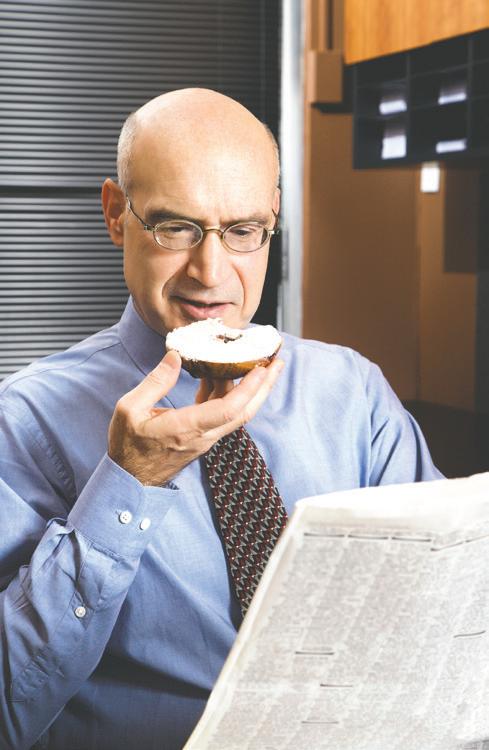
Mini Fact: About 66% of people who were eligible to vote in 2020 went to the polls.
On election night, follow the results online, on TV or on the radio. Color in blue each state that votes Democrat. Color Republican states in red. Circle your state.
The map shows how many electoral votes each state gets.
students. Another meaning for “college” is a group that meets and has special duties.
The Electoral College has the duty to elect the president of the United States. Its members vote based on how the people in each state voted.
Each state gets a number of electoral votes equal to the number of members it has in the U.S. Congress. For example:
North Carolina has 14 representatives and two senators, so it gets 16 electoral votes.
The political parties in each state nominate a set of electors equal to the state’s number of members of Congress. So North Carolina has 16 Republican and 16 Democratic electors.
Next Week:
Our states: Alabama
If the popular vote goes for the Republican candidate in that state, the Republican electors cast their votes for him or her.
The electoral votes total 538. This number is based on the total number of members of Congress.
On the Tuesday after the first Monday in November, voters go to the polls. The winning ticket in each state gets all of that state’s electoral votes (except in Maine and Nebraska, where the electoral vote may be split between the candidates).

We usually know who the winner is on election night by counting the electoral votes. However, there are other steps to make it official.
In December, the winning electors, or special voters from each state, meet in their state capitals and cast their votes. These electoral votes are put into sealed envelopes and sent to the president of the U.S. Senate.
On Jan. 6, he or she opens the envelopes. The results are read before a meeting of the U.S. Senate and House of Representatives. Words that remind us of the Electoral College are hidden in this puzzle. Some words are hidden backward or diagonally, and some letters are used twice. See if you can find:





The Electoral College Voting is a citizen’s most important duty. But there is another step after individuals vote. It is called the Electoral College. This is not a college with a campus and
The political parties in each state nominate a set of electors equal to the state’s number of members of Congress. So North Carolina has 16 Republican and 16 Democratic electors.
Words that remind us of the Electoral College are hidden in this puzzle. Some words are hidden backward or diagonally, and some letters are used twice. See if you can find:
CANDIDATE, CAPITALS, CITIZEN, COLLEGE, CONGRESS, DEMOCRAT, DUTY, ELECTORAL, ELIGIBLE, MEMBERS, PARTY, POPULAR, PRESIDENT, REPUBLICAN, RESULTS, STATE, TICKET, VOTE.
All-American Apple Cobbler
You’ll need:
• 6 apples, thinly sliced
• 1/2 cup sugar
• 1 teaspoon cinnamon
• 3 tablespoons water
What to do:
• 1 tablespoon plus 1 cup all-purpose flour
• 1/2 cup brown sugar
• 1/2 cup butter, melted

Ernie: Where do polar bears vote?
Donny: The North Poll!



1. Combine first four ingredients, plus 1 tablespoon flour, in a medium bowl. Mix well.
2. Placed in a 9-by-12-inch greased casserole dish.
3. Combine 1 cup flour and remaining ingredients in a medium bowl. Mix well.
4. Crumble brown sugar topping evenly over apples.
5. Bake in a preheated 350-degree oven for 45 minutes or until topping is slightly browned. Serves 8.
Use the letters in the boxes to make a word with the same meaning as the clue. The numbers in parentheses represent the number of letters in the solution. Each letter combination can be used only once, but all letter combinations will be necessary to complete the puzzle.
1. response to a question (6)
2. unfamiliar person (8)
3. leftover pieces (6)
4. without a flaw (7)
5. middle of your hand (4)
6. pay no attention to (6)
7. animal with a long neck (7)
stranger, scraps, perfect, palm, ignore, giraffe.


You’ll need an adult’s help with this recipe.
Nearly 1 person in 3 around the world is now suffering from an increased number of hot nights brought on by humaninduced climate change, according to a new study. It also found that around 2.4 billion people have experienced at least two weeks of temperatures that didn’t fall below 77 degrees at night over the past decade. The United Nations says this is just above the threshold where sleep often becomes uncomfortable for humans. The Indian city of Mumbai endured 60 more days of hot nights than normal during the past 10 years.
For later:
Look in your newspaper for articles about the upcoming presidential election.
Teachers: Follow and interact with The Mini Page on Facebook!




By Jim Miller
Dear Savvy Senior, I recently turned 65 and would like to know if am supposed to get the pneumonia vaccine. And if so, which type of vaccine do I need, and is it covered by Medicare?
Relatively Healthy
Dear Relatively,
Yes, the Centers for Disease Control and Prevention (CDC) does indeed recommend the “pneumococcal vaccines” (for pneumonia) for adults age 65 and older. These vaccines are also recommended for younger people with long-term health issues or weak immune systems, as well as children under 5 and people who smoke.
Pneumonia, which can happen anytime — not just during the cold months — can be a serious and even life-threatening condition. Each year, pneumonia causes a whopping 1.5 million people to visit medical emergency departments in the U.S. and causes roughly 50,000 deaths.
A recent study found that the use of pneumonia vaccines is associated with a 24 percent

decreased risk of death, but vaccination rates aren’t that high. Around 67 percent of adults over the age of 65 are vaccinated against pneumonia, and just 24 percent of younger people (1964 years old) at risk for pneumonia are vaccinated. The main reasons for this are because many people are unsure whether they need the vaccine, while others aren’t even aware a vaccine exists.
There are three different vaccines available, some more appropriate for certain people than others. They are the pneumococcal polysaccharide vaccine PPSV23 (Pneumovax23), the pneumococcal conjugate vaccine PCV15 (Vaxneuvance) and PCV20 (Prevnar 20). The numbers indicate how many strains,
or serotypes, of streptococcus pneumoniae are included in the vaccine.
SO, WHICH VACCINE SHOULD YOU GET?
If you’ve never been vaccinated for pneumonia, the newer PCV20 is the top choice — it covers the 20 most common serotypes now. If that vaccine is not available in your area, you can get the PCV15 vaccine, followed one year later by PPSV23.
If you had the earlier PCV13 (but not PCV15), or the PPSV23 at or after age 65, you’re likely eligible to get the PCV20 for increased protection.
But because of the different possibilities, you need to talk to your doctor or pharmacist about the most effective option for you.





TODAY’S HISTORY:
• In 1931, Al Capone was convicted of income tax evasion and sentenced to 11 years in prison.
• In 1933, German refugee Albert Einstein immigrated to the United States, where he would live and work for the rest of his life.
• In 1989, a 6.9-magnitude earthquake struck Northern California, killing more than 60 people.
• In 2006, the U.S. population topped 300 million for the first time.
TODAY’S FACT:
• In 1952, Albert Einstein was offered the post of Israeli president, which he politely declined.
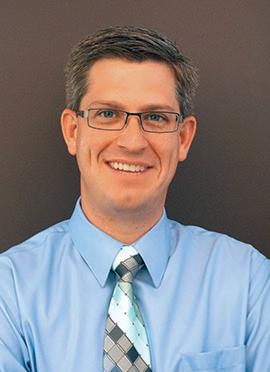



SENIOR STRENGTH AND FUNCTIONAL MOBILITY
Ages 50-plus. Join this fitness program just for seniors. The program will concentrate on developing upper and lower body strength, improving balance and strengthening your core. In this dementia-friendly class, participants are encouraged to work within their abilities. Wednesdays and Fridays, 9:45-10:45 a.m., $5 per visit. The R.E.C. Zone, 94 Harvest Lane.
JAZZERCISE CARDIO SCULPT PROGRAMS
Ages 50-plus. Programs are low impact with different levels of intensity. Instructors will show you how to take it high or
low. Class passes of 1, 5 and 10 visits available to purchase. Cardio Sculpt Low is Tuesdays and Fridays, 8:30-9:30 a.m. and Mondays and Wednesdays, 11 a.m.-12 p.m. Cardio Sculpt Low/High is Tuesdays and Wednesdays, 4:455:45 p.m. and Sundays, 8:30-9:30 a.m. The R.E.C. Zone, 94 Harvest Lane.
TAI CHI INTRODUCTION
Ages 50-plus. The ancient art of Tai Chi has become increasingly popular as people find that it improves balance, increases mindfulness and relaxes the mind and body. This class will present sequences of movements derived from the Sun style, which is slow, smooth and upright in posture. Wednesdays, 12:15-1:15 p.m. Free. The R.E.C. Zone, 94 Harvest Lane.
PICKUP TABLE TENNIS
Available by registration and online payment at willistonrec. org. The program is for ages 12plus. Those between the ages of 12-16 must be accompanied by an adult. The program meets once a week from October-May.
PICKUP BASKETBALL
Pickup basketball is for men ages 20-plus and 30-plus, as well as women ages 19-plus. The programs meet once a week October-May. Register at willistonrec. org.
PICKUP VOLLEYBALL
Pickup volleyball is for adults ages 18-plus. The program meets once a week October-May. Register at willistonrec.org.
SPEECH & DEBATE
Grades 5-8. This program will introduce middle school students to speech and debate through pub -

lic speaking activities. Competitions are optional and take place during the winter. The program starts Oct. 23 and runs Wednesdays, 2-3 p.m. $30. Instructor: Kathryn Kernoff, CVU speech/ debate coach
Referees are needed for grade 1-8 basketball programs. Games are Saturdays in January and February. Opportunities are paid or volunteer. Email recreation@ willistonvt.org if interested.
AGES 5-6 (COED).
This parent/child program is designed to teach basketball fundamentals. Youngsters will be introduced to a new skill and fun activities to enhance their learning each week. This program meets on Saturdays in January and February. Instructors: Rec. Staff GRADE 1-2 AND GRADE 3-4 BASKETBALL
GRADE 5-6 BASKETBALL
If numbers allow, separate boys’ and girls’ leagues will be offered. The leagues meet twice a week for one hour each time — one practice and one game. Parent volunteers are needed to coach and can sign up to coach when registering a child.
GRADE 7-8 BASKETBALL
This team meets twice a week for one hour each time —one practice and one game. Parent volunteers are needed to coach and can sign up to coach when registering a child.
If numbers allow, separate boys’ and girls’ leagues will be offered. The program provides the opportunity for youngsters to learn the game, improve their skills and enjoy playing. The program meets on Saturdays in January and February. The one-hour session will consist of a practice and scrimmages. Parent volunteers are needed to coach and can sign up to coach when registering a child.

Susan D. Hardin of Tree Hill Road in Williston died on October 2, 2024 at The Respite House in Colchester, following a protracted illness.
She was born on January 20, 1944 in Glens Falls, N.Y., daughter of Richard S. and Nellie Coolidge Duell. She graduated Needham High School and Smith College.
She obtained a Masters in Teaching at Wesleyan University (Connecticut), then had a long teaching career first in New York City, then in South
Burlington Schools. Sue loved friends, hiking, quilting, collecting decoys and Burlington postcards, and fashioning Christmas ornaments. She enjoyed guiding at Shelburne Farms, gardening at Shelburne Museum and at College Street Church, and covering the desk at the Dorothy Alling Library in Williston. She took kayaking and stone sculpture classes, and loved visiting with her grandchildren.
She is survived by her husband of 57 years Nicholas J. Hardin, her children Katherine and Christopher, her four grandchildren, her brothers Steve and Emery, and many nieces and nephews.
The family would like to thank the doctors, nurses, and staff of UVM Medical Center and the Respite House for their professional care, kindness and consideration.
A memorial service and celebration of her life will be held on Saturday, November 9, 2024, at the College Street Congregational Church in Burlington. In lieu of flowers, memorial contributions may be made to College Street Congregational Church, 265 College Street, Burlington, or to the McClure-Miller Respite House.
Side effects of these vaccines tend to be mild, but may include feeling achy and tired as well as redness, swelling and soreness where the injection was given.
You’ll also be happy to know that Medicare Part B covers both single dose and two-dose pneumococcal shots, and you only need to get it once. Unlike the flu shot, which is given annually.
Most local pharmacies and community health clinics offer pneumococcal vaccines, but you may want to call ahead just to be sure.
For more information, visit the CDC’s Pneumococcal Vaccination webpage at CDC.gov/vaccines/vpd/pneumo/index.html.
OTHER VACCINES
To avoid getting pneumonia as a con -
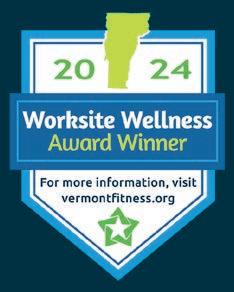
sequence of a viral infection, you should also consider getting a flu shot, RSV shot and a Covid-19 booster this fall.
While vaccines cannot prevent every case of pneumonia (or other conditions they’re given for), those who get them usually have milder infections, a shorter course of illness and fewer serious complications than people who don’t get vaccinated.
The flu shot and Covid booster are both covered by Medicare Part B, while the RSV vaccine (which is recommended every other year) is covered under Medicare (Part D) prescription drug plans. All three shots can also be given simultaneously.
Send your senior questions to: Savvy Senior, P.O. Box 5443, Norman, OK 73070, or visit SavvySenior.org. Jim Miller is a contributor to the NBC Today show and author of “The Savvy Senior” book.
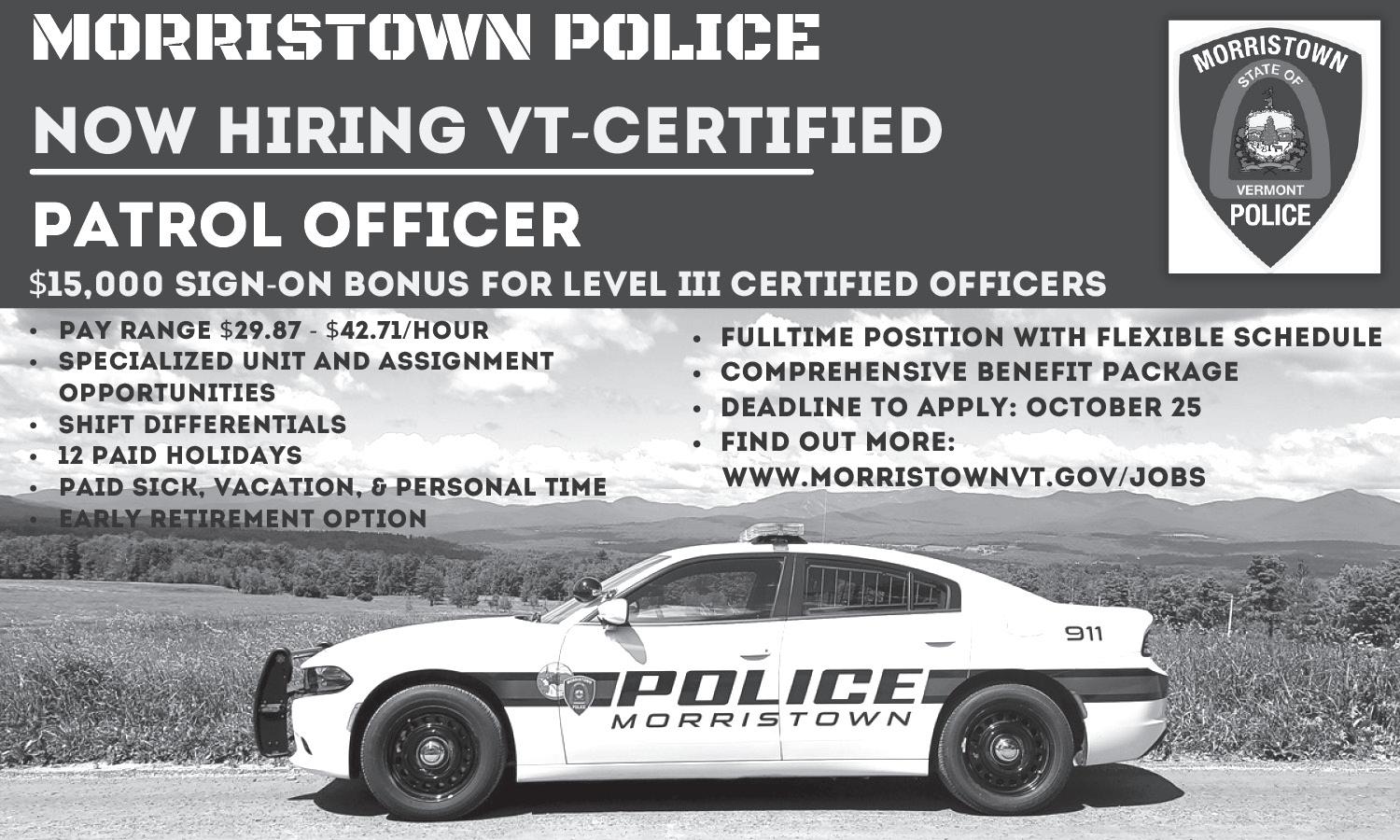
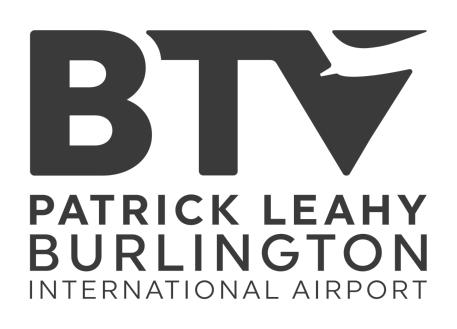
PUBLIC MEETINGS
PATRICK LEAHY BURLINGTON INTERNATIONAL AIRPORT
WEDNESDAY, OCTOBER 23, 2024, 6:30-8:00 P.M. CHAMBERLIN SCHOOL, SOUTH BURLINGTON
THURSDAY, OCTOBER 24, 2024, 6:30-8:30 P.M. WINOOSKI HIGH SCHOOL
Notice is hereby given that Public Meetings will be held on Wednesday, Oct. 23, 2024, at 6:30-8:00 p.m. (South Burlington Public Meeting) at Chamberlin School, and Thursday, Oct. 24, 2024, at 6:30-8:30 p.m. (Winooski Public Meeting) at the Winooski High School.
These meetings will provide an overview of the DRAFT NOISE EXPOSURE MAP REPORT that has been prepared on behalf of Patrick Leahy Burlington International Airport. The meetings will be workshop style with various stations for individuals to review the information and ask questions. There will be no formal presentation. Comment sheets will be available for the public to leave their comments.
The draft report can be found on the Airport’s noise program website: btvsound.com. Physical copies of the draft report are also available for review at the Patrick Leahy Burlington International Airport administrative offices located at 1200 Airport Rd, South Burlington, VT, Suite 1.
Public comments can be submitted at the meetings or via email to btvsound@jonespayne.com
The public comment period will close Friday, Nov. 15, 2024, at 5:00 p.m. Additional comments and questions regarding the noise program can be submitted at any time.
Bring this ad to the


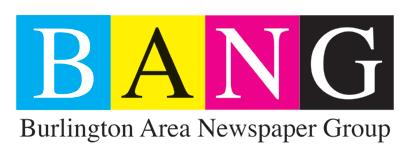
To place a classified ad, email rick@williston observer.com or call 802-373-2136
Deadline for classifieds is Monday.
WINDRIDGE — Oct.19 and 20, 9 a.m. - 1 p.m. 147 Windridge in Williston. Assorted quality clothing, oodles of girls’ toys, large collection of Disneyana books, big free pile, and plenty of odds and ends. Come see our treasures.

Tuesday, October 22, 2024 – 7:00 PM
Town Hall Meeting Room (Town Hall, 7900 Williston Rd, use rear entrance) or Zoom Meeting ID 846 5863 3532 on zoom.us/join or call 1-646-558-8656
DP 22.06.1 Green State Realty, LLC c/o O’Leary-Burke Civil Associates, PLC Karl Marchessault requests discretionary permit review to amend final plans with expanded parking and outdoor storage, as well as a Master Sign Plan, for the MD Motors car dealership at 4626 Williston Rd in the Industrial
West Zoning District (IZDW).
APP 25-01 Christian Chorba, Esq. on behalf of appellant, Dawna Pederzani, files an appeal of Zoning Notice of Violation issued July 24, 2024, as related to AP 23-0121, an administrative permit issued to Pederzani for a dog rescue home business (Vermont English Bulldog Rescue) at 170 Lamplite Ln in the Residential Zoning District (RZD).
Project details and site plans are available on the website, town.williston. vt.us, under “Public Records and Documents”, then “Agendas & Minutes”, and “Development Review Board”. Contact Planning & Zoning Office for more information: 802-878-6704 or email planning@willistonvt.org


JOIN OUR TEAM: The City of South Burlington is seeking a dedicated and detail-oriented Finance and Taxation Officer to join our dynamic team. If you’re passionate about public service and have a talent for finance and numbers, this is the perfect opportunity for you to make a meaningful impact in our vibrant community! WHAT YOU WILL DO: You will play a crucial role in ensuring compliance with taxation regulations, assisting with managing the City’s financial operations, and contributing to our community’s economic health. Your responsibilities will include overseeing tax assessments, property valuation, collections, and compliance activities and collaborating with the Finance Director to manage the City’s financial operations including developing budgets and forecasts.
MINIMUM QUALIFICATIONS: Bachelor’s degree in business administration, finance, accounting or a related field, plus 5 years relevant work experience in property assessment, or tax collection, accounts payable/receivables, and reporting, required; equivalency considered. Municipal government accounting experience preferred.
SALARY RANGE: $85,000-$90,000 (annually)
APPLY NOW: Review of on-line applications will begin November 4, 2024. To apply, learn more about the position and see a complete job description, please visit: governmentjobs.com/careers/ southburlington. The City of South Burlington is an Equal Opportunity Employer.







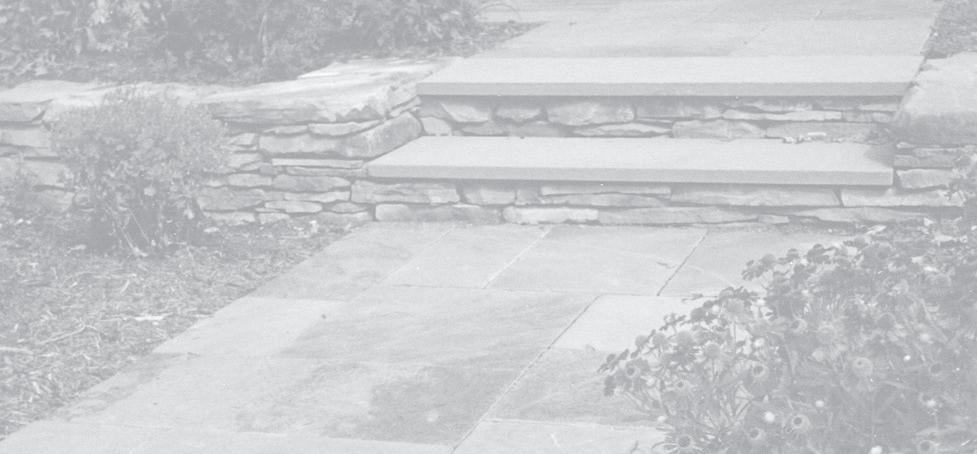






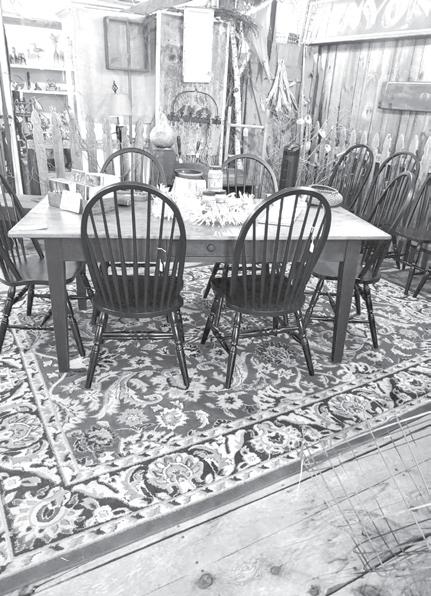





information: www.vtlandmaintenance.com Email: vtlandmaintenance@gmail.com Brian Washburn: 802-434-5533 • 802-373-1755 (cell)





